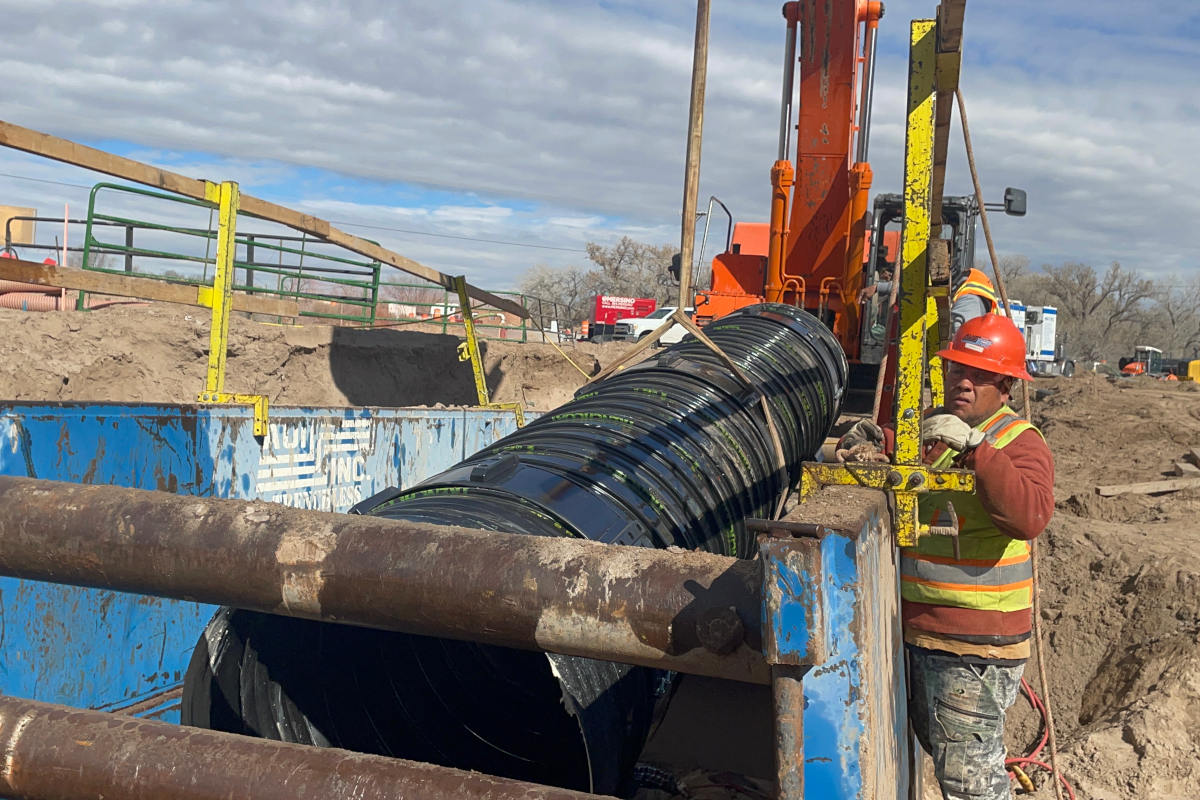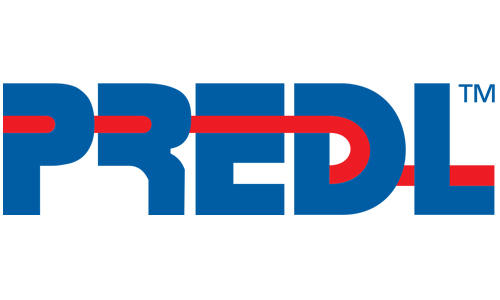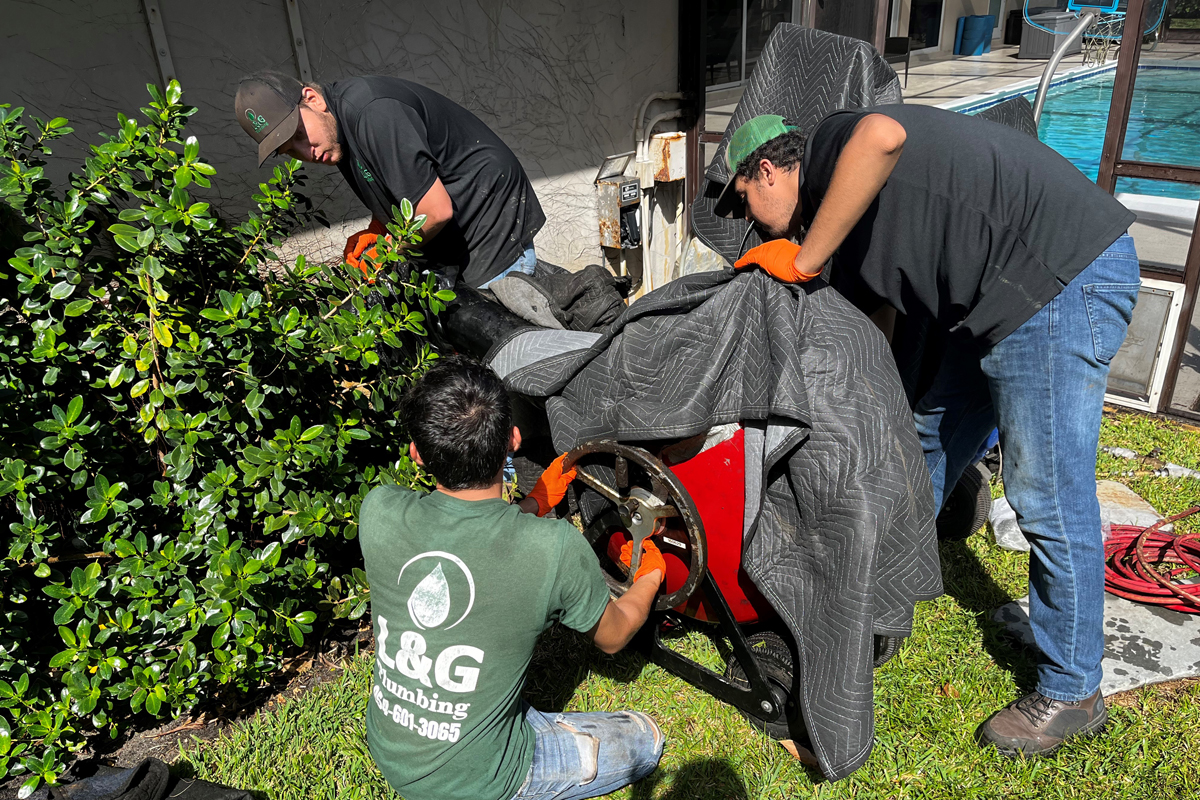
Improving the Flow: Relining a Culvert Under Marine Boulevard
March 13, 2018

All told from cleaning to completion, Am-Liner East’s portion of the Piney Green Road improvement project took four weeks.
Jacksonville, North Carolina, is home to Marine Corps Base Camp Lejeune and Marine Corps Air Station New River, and Marine Boulevard is a busy four-lane local highway outside of the base lined by retail and other commercial development. Recent development along Marine Boulevard spurred flooding issues for businesses in the area of Piney Green Road, and improvements were in order.
RELATED: Premier-Pipe USA Makes Its Mark in the CIPP Market
To address the flooding issues, as part of its Piney Green Road improvement project, the North Carolina Department of Transportation made the decision to include drainage improvements at the intersection of Piney Green Road and Marine Boulevard (U.S. Highway 17). Those improvements included the addition of a 48-in. steel conduit, installed via jack-and-bore, to improve flow capacity and the relining of the existing culvert under Marine Boulevard. Other improvements included the installation of 48- and 54-in. culverts parallel to the highway to prevent flooding. Prime contractor on the project was English Construction Co., of Lynchburg, Virginia.
For the trenchless relining portion, English Construction Co. contracted with Am-Liner East Inc., of Berryville, Virginia, to complete the project in June 2017, using the Premier-Pipe USA Tech Liner.
“That 48-in. culvert exits in front of a large car dealership’s parking lot,” says Peter Martin, project manager at Am-Liner East. “Because of the development, more water would hit that pipe quickly, as opposed to soaking into the generally flat coast area.”
Relining Challenges
The project posed several challenges for the Am-Liner East crews — First of which was dewatering. Because the area was generally flat and the existing culvert was poorly graded so water would enter the pipe from both the inlet and outlet side. Martin estimates that the pipe backs up with about 2 ft of water, something crews had to contend with for the duration of the project. To divert water on the upstream end, Am-Liner East crews sandbagged the drainage swale to divert water to the new culvert.
RELATED: Drilling Fluids Play Critical Role in North Carolina HDD Project
The second issue that the crew had to contend with was the multiple-size conduits running under Marine Boulevard. The pipe to be rehabbed included 84 ft of 54-in. reinforced concrete pipe (RCP), 48.5 ft of 48-in. square box culverts, 12 ft of 48-in. corrugated metal pipe and 16 ft of 48-in. RCP.
Based on his assessment of the pipe, Martin says it is likely the box culvert is the original culvert installed under the highway, which at the time was two lanes. With the initial highway widening the department of transportation add the RCP and then the corrugated was added to expand the shoulder. The additional 16 ft of 48-in. RCP was added as part of this project.

Because of its shallow grade, the culvert under Marine Boulevard had flow from the upstream and downstream end making it difficult to dewater.
The initial plan called for relining in transitions, and Am-Liner East worked with its engineer, Dick Cornelius, P.E., to provide design calculations and liner thicknesses to create a multiple-size transition liner.
“With the 48-in. outlets on both sides of the road, we made the decision to modify the box culvert to a round configuration, so that we could make an easy transition from the 54-in. to the 48-in. and then right to the outfall,” Martin says. “The transitions themselves did not make the project more complex. What we found was, because the pipe was fully deteriorated, we could not line the square portion and manage the thicknesses of the liner. It would have required too thick of a liner to line through the square. That is when we decided to make the box culvert into a round configuration. We eliminated significant transitions between the circumferential measurement of a 48-in. square as compared to a 48-in. round.”
Allis Concrete Construction, of Mocksville, North Carolina, was subcontracted to clean the 48-in., grout leaking joints and placing concrete in the corners to make the square culvert round. The result was only one transition from 54 in. to 48 in. Allis Concrete successfully completed its work prior to the scheduled lining.
As for the CIPP installation itself, Martin says that it went as expected and was a success.
RELATED: Storm, Sanitary Systems Still at Top of Relining Heap but Pressure Pipe, Laterals Poised for Growth
“The lining crew started at 6:30 a.m. on June 27 and once the liner was turned, the inversion went smoothly as planned. The outlet end had to be braced to keep the liner intact. Internal pressure was raised slowly to 3 psi, then steam was added,” Martin says. “Curing and cooling went all night and the ends were cut back the next day. The final product was nearly perfect. The 54-in. to 48-in. transition hit the mark spot on and the liner was absolutely round through the box culvert. The corrugated portion of the liner was nicely smoothed.”
All told from cleaning to completion, Am-Liner East’s portion of the project was complete in approximately four weeks.
“This installation went very well because of detailed planning, hard work and great teamwork,” Martin says.
Mike Kezdi is associate editor of Trenchless Technology.





